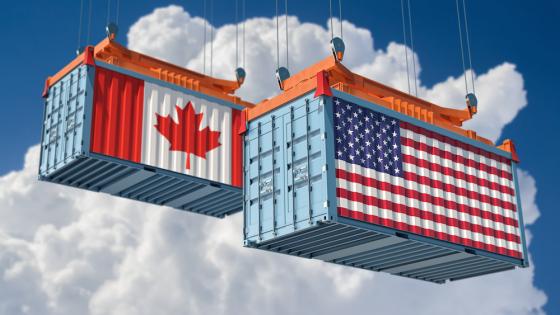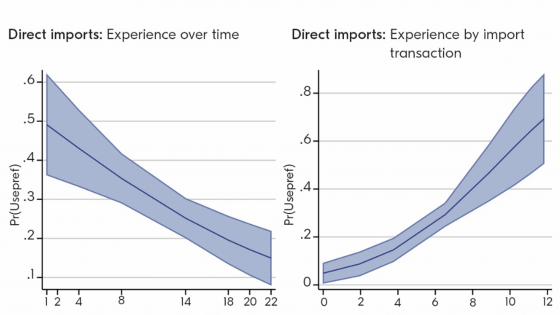In the summer of 1947, with the ink still drying on the documents of Nazi surrender, the minds of Western governments were sharply focused on reconstruction and reconciliation across Europe. By the time the Marshall Plan was discontinued at the outbreak of the Korean War in 1951, the US had disbursed the now legendary sum of $13.3 billion to Western Europe (about $100 billion in today’s money). The European Coal and Steel Union and Treaty of Rome quickly followed and, just ten years after devastating conflict, the Federal Republic of Germany was a sovereign state. Could such a rapid and peaceful integration ever be repeated? In 1999 Europe faced the ruins of another catastrophic war in the Balkans, and the EU and the US set up the Stability Pact for South Eastern Europe in the hope that the answer would be yes (EU 2000).
Initial scepticism
In early 2000, the EU initiated the Stabilisation and Association Process offering the Balkans relatively deep and comprehensive free trade agreements with the EU (Stabilisation and Association Agreements). The Stabilisation and Association Process stated that any Balkan States with an Stabilisation and Association Agreement with the EU would also have to have a free trade agreement with each other. The European Council provided a “European perspective” in June 2000, declaring that all Stabilisation and Association Agreements countries were potential candidates for EU accession (Gylfason and Hochreiter 2008 and 2010). The Stability Pact proposed in 2001 to Balkan Trade Ministers that they negotiate a regional free trade agreement.
Balkan leaders feared that regional integration would distract from their priority of accession to the EU (Wijkman 2009). Some also feared that a free trade area among primarily ex-Yugoslav States (Albania being the sole outsider) could create a Yugoslavia redivivus and insisted that Bulgaria and Romania, negotiating EU accession, also participate. A few were reluctant to negotiate with recent enemies, but were willing to negotiate selective bilateral free trade agreements. At best, these could eventually build a network covering most of the region. Reluctantly, pairs of seven Balkan States started bilateral negotiations in 2001.
By mid-2003, several countries had negotiated a fairly complete network of bilateral trade agreements, as the ”domino effect” of preferential trade agreements played itself out. Moldova, having a special relationship with Romania, had immediately asked to join the group and Montenegro prepared to detach itself from Serbia. Kosovo was administered and represented by the UN Interim Administration Mission in Kosovo. Each of these wanted its own bilateral agreements, doubling the total number of bilateral agreements necessary to cover the whole region. Therefore, in 2005, governments finally agreed to investigate how to convert the network of bilateral agreements into a single regional free trade agreement.
A decisive factor in speeding up Balkan economic integration was the Declaration by the European Council in 2003 that the future of the western Balkans lay in the EU. The Balkan states started to see accession to the EU as a credible prospect. This transformation of regional free trade from a suspected substitute for EU membership into a prerequisite for it made all the difference. To drive home the point, the Commission invited governments to negotiate a single regional agreement in Brussels. Intensive rounds of negotiations in 2006 resulted in an ambitious revision of the existing Central European Free Trade Agreement (CEFTA 2006). This single regional agreement was signed by all parties in December 2006 in Bucharest – and without a moment to spare. In January 2007, Bulgaria and Romania acceded to the EU leaving Croatia in CEFTA, not alone now but joined by other Balkan countries.
Some reasons for success
The Stability Pact’s Trade Working Group helped to facilitate discussions, depersonalise issues, and build confidence. It contained representatives of the European Commission, the US, the World Bank, and the WTO. Also, several EU member states and EFTA states as well as Balkan neighbours participated and acted as mentors.
Developing good-neighbour relations in a post-conflict situation required the European Commission to convince former enemies that no country could accede to the EU without first normalising relations with its neighbours. Once convinced, countries competed to be front runners.
Finally, Stability Pact members provided funding. The UK, the US, and Switzerland funded secretariat services, attendance at meetings, and policy studies. Further, the European Commission and member states funded training courses for civil servants in the Balkan states. Though modest, financial support was crucial to initiate the process.
Race on the accession track
The EU provided the Balkan states with an accession track with a number of clearly defined stations. The first station was regional free trade. The second was free trade with the EU. Each country chose its own speed on its journey towards its final destination, which for most was EU membership. First out were Croatia and Macedonia whose Stabilisation and Association Agreements, signed in 2001, entered into force in 2004 and 2005. Croatia and Macedonia were first to submit an application for EU membership in 2003 and 2004, and received positive opinions from the Commission one year later. Membership negotiations opened with Croatia in 2005 (once it had fulfilled conditions concerning, inter alia, suspected war criminals) and are now proceeding, after a few interruptions, to a conclusion, possibly in 2012. The European Commission’s recommendation to open negotiations with Macedonia was blocked by Greece’s objection to the new republic’s name. This political blockage aside, these two early birds proved the advantage of being first starters.
For other CEFTA countries, progress towards Stabilisation and Association Agreements with the European Commission took longer. Montenegro achieved independence in 2006, signed a Stabilisation and Association Agreement with the EU in 2007, applied for membership a year later, and received candidate status in 2010. Albania found it difficult to fulfil political requirements after half a century of isolation and its Stabilisation and Association Agreement, signed in 2006, entered into force in 2009 whereupon Albania applied for membership.
Serbia’s progress was slow because of strong domestic opposition to accepting Kosovo’s independence and to handing over suspected war criminals to the International Court of Justice in The Hague. Its Stabilisation and Association Agreement was signed in 2008 and application of the interim agreement was unblocked in 2009, encouraging Serbia to apply for EU membership. While the government must take many more steps, steady but slow progress promises a brighter future to a young generation eager to turn its back on a nationalistic past.
Bosnia and Herzegovina and Moldova have made the least progress of all countries since 2001 due to internal problems. This precludes membership for some time. Only recently have leading politicians in Bosnia and Herzegovina made statements suggesting attempts at reconciliation, essential for unblocking the political deadlock and accelerating economic growth.
All is well that ends well
The Balkan countries spent six years negotiating a free trade agreement for the region. Some of them may spend even longer negotiating a bilateral free trade agreement with the EU. But all except Bosnia and Herzegovina and Moldova are on track to EU membership. Progress was initially slow but it was steady. Small successes encouraged further success. Much remains for them to do and will require hard work on the nitty-gritty of trade policy. But, one after the other, the Balkan countries are proving that they can do it. Bosnia and Herzegovina is the exception that proves the rule and will be treated in our next column.
References
Baldwin, Richard, and Charles Wyplosz (2006), The Economics of European Integration, McGraw-Hill.
EU (2000), The Zagreb Summit Declaration.
CEFTA (2006), Agreement on Amendement of and Accession to the Central European Free Trade Agreement.
Gylfason, Thorvaldur, and Eduard Hochreiter (2008), “Governance and growth: Why does Georgia lag behind Estonia?”, VoxEU.org, 2 August.
Gylfason, Thorvaldur, and Eduard Hochreiter (2010), “Growing together: Croatia and Latvia”, VoxEU.org, 8 December.
Wijkman, Per Magnus (2009), “Frihandel för fred: Exemplet Balkan (Free Trade for Peace: The Balkan Example)”, SNS Förlag, Stockholm.


